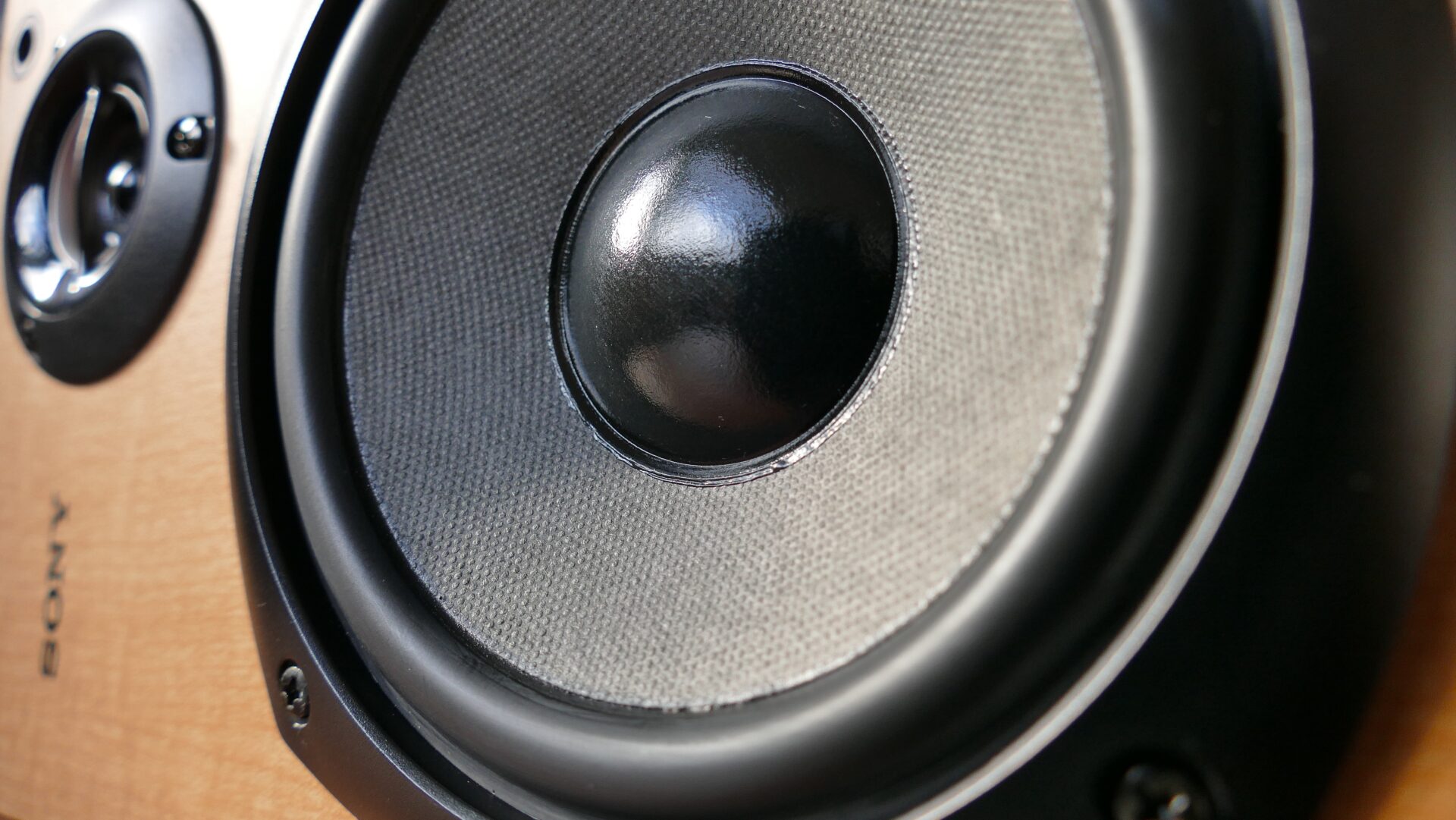In today’s fast-paced, technology-driven world, the concept of a smart home is rapidly becoming the new normal. One of the most significant advancements in smart home technology has been the integration of voice-enabled devices. With these powerful tools, homeowners can now control their smart home security systems using simple voice commands, adding a new level of convenience and accessibility. In this comprehensive guide, we will delve into the process of setting up voice control for your smart home security system, explore the benefits it offers, and provide you with practical tips on choosing the right devices and voice assistants. Join us as we take a closer look at the future of home security management, where convenience meets cutting-edge technology.
Choosing the Right Voice Assistant for Your Smart Security System
When it comes to selecting a voice assistant for your smart home security system, there are several options available in the market. Each of these voice assistants come with their unique features and capabilities, making the choice a crucial aspect of your smart home security setup. In this subsection, we will discuss some of the popular voice assistants and the factors to consider when making a decision to ensure seamless integration and optimal functionality.
Comparing Top Voice Assistants: Amazon Alexa, Google Assistant, and Apple Siri
Three of the most widely-used voice assistants in smart homes are Amazon Alexa, Google Assistant, and Apple Siri. Each of these platforms is backed by tech giants, ensuring a high level of quality and functionality. However, there are some differences in their features, compatibility, and privacy which may influence your choice.
Amazon Alexa is known for its extensive compatibility with various smart home devices, including security systems. It offers a wide range of skills, allowing you to customize voice commands and create routines to automate your security setup. Alexa’s main drawback is its relatively weaker privacy controls compared to its competitors.
Google Assistant is another popular choice, boasting a user-friendly interface and advanced natural language processing capabilities. It is highly compatible with various smart home devices; however, its range of supported security systems may be slightly limited compared to Alexa. Google Assistant also offers better privacy features than Alexa but falls short when compared to Apple Siri.
Apple Siri is a solid option for those who prioritize privacy and security. Its integration with Apple HomeKit ensures seamless functionality with other Apple devices, but its compatibility with third-party smart home devices is comparatively limited. Siri has a smaller user base than Alexa and Google Assistant, which may impact the development of new features and compatibility updates.
Factors to Consider When Choosing a Voice Assistant
Before making a decision, it is essential to evaluate your specific requirements and preferences. Here are some factors to consider when choosing a voice assistant for your smart security system:
- Compatibility: Ensure that your preferred voice assistant is compatible with your existing smart home devices and security system. Check for any specific device models or brands that may not work with the voice assistant you are considering.
- Functionality: Assess the features and capabilities of each voice assistant, including their ability to understand and execute complex voice commands, as well as the availability of customizable routines and automations.
- Privacy and Security: Consider the privacy features and data handling policies of each voice assistant to ensure your personal information and home security data are protected.
- Ecosystem: If you already use a particular ecosystem of devices (e.g., Apple, Amazon, or Google), it may be more convenient to choose a voice assistant from the same ecosystem for seamless integration and better user experience.
By thoroughly assessing these factors and comparing the available options, you can make an informed decision and choose the best voice assistant to enhance your smart home security system experience. Remember that the right choice will ultimately depend on your individual preferences, requirements, and the specific devices you have in your smart home ecosystem.
Step-by-Step Guide to Integrating Voice Commands with Home Security Devices
Integrating voice commands with your smart home security devices can significantly enhance your convenience and accessibility. This step-by-step guide will help you through the process of setting up voice control for your smart home security system, ensuring a seamless and efficient experience.
1. Choose a Compatible Voice Assistant and Smart Home Security Devices
Before you can integrate voice commands with your home security devices, you need to ensure that your chosen voice assistant is compatible with your smart home security system. Refer to the previous section on choosing the right voice assistant for detailed guidance. Once you have made a decision, verify that your security devices are also compatible with your chosen voice assistant.
2. Set Up Your Voice Assistant Device
Follow the manufacturer’s instructions to properly set up your voice assistant device. This process usually involves connecting the device to your Wi-Fi network, creating or signing into an account associated with the voice assistant, and downloading the corresponding smartphone app for easy management and control.
3. Link Your Smart Home Security Devices to the Voice Assistant
After setting up your voice assistant device, the next step is to link your smart home security devices to the voice assistant. This process may vary depending on the specific devices and voice assistant you are using. Generally, you will need to enable the relevant skill or service in the voice assistant’s app and follow the prompts to link your security devices. Make sure your security devices are properly installed and connected to your home network before attempting this step.
4. Customize Voice Commands and Routines
Once your smart home security devices are linked to your voice assistant, you can start customizing voice commands and routines. Most voice assistants allow you to create custom commands, which can be helpful in tailoring the system to your specific needs. For instance, you can set up a command like “Arm security system” to enable your system’s away mode or “Secure the house” to lock all doors and windows. Additionally, you can create routines that automate multiple actions with a single command, such as turning on lights, locking doors, and arming the security system when you say “Goodnight.”
5. Test Voice Commands and Adjust Settings as Needed
After configuring your voice commands and routines, it’s important to test them out to ensure they are working as intended. Try using various voice commands to control your smart home security devices and observe their responses. If necessary, adjust the settings or commands to improve reliability and responsiveness. This step may require some trial and error, but it will help you fine-tune your voice-controlled security system for optimal performance.
6. Train Household Members on Using Voice Commands
Finally, educate your household members on how to use the new voice commands and routines effectively. This ensures that everyone in the home can take full advantage of the convenience and safety features offered by your voice-enabled smart home security system. Consider creating a cheat sheet with commonly used commands and placing it in a central location for easy reference.
By following these steps, you can successfully integrate voice commands with your smart home security devices, providing you with an enhanced level of convenience and control over your home’s safety. Enjoy the benefits of a voice-controlled security system and experience the future of home security management.
Enhancing Home Safety with Custom Voice-Controlled Security Automation
Customizing voice-controlled security automation can significantly improve the safety and convenience of your smart home. By creating personalized commands and routines, you can optimize your security system to cater to your specific needs and preferences. In this subsection, we will explore various ways to enhance home safety using custom voice-controlled security automation, as well as provide some practical tips for implementing these features.
Creating Effective Voice Commands for Common Security Scenarios
One of the key benefits of voice-controlled security automation is the ability to create customized voice commands that cater to your specific needs. Consider common security scenarios that you encounter in your daily routine and create voice commands that address these situations effectively. For example, you could create a command like “Secure the perimeter” to lock all doors and windows, or “Activate night mode” to arm the security system and turn off non-essential lights. By designing effective voice commands, you can simplify your security management and increase the overall safety of your home.
Establishing Routines for Enhanced Security and Convenience
Routines are a powerful feature of voice-controlled security automation that allow you to execute multiple actions with a single command. By creating custom routines, you can streamline your daily tasks and enhance the overall security of your home. For example, a “Leaving home” routine could automatically lock all doors, arm the security system, and turn off unnecessary devices. Similarly, an “Arriving home” routine could disarm the security system, unlock the front door, and turn on your entryway lights. Experiment with different routines to find the perfect balance between convenience and safety for your unique lifestyle.
Utilizing Voice Control for Emergency Situations
Voice control can be a valuable tool for managing emergency situations. In the event of an intrusion or other security threat, voice commands can enable you to quickly activate alarms, lock doors, or contact emergency services without fumbling for a phone or remote control. Consider creating specific voice commands for emergency scenarios, such as “Sound the alarm” or “Call the police,” and ensure that all household members are familiar with these commands. This can help you react swiftly in times of crisis and improve the overall safety of your home.
Implementing Voice-Controlled Security Features for Elderly or Disabled Residents
Voice-controlled security automation can be especially beneficial for elderly or disabled residents who may have difficulty operating traditional security systems. By creating custom voice commands and routines, you can make it easier for these individuals to manage their home security and maintain their independence. For example, you could set up a voice command like “Help, I’ve fallen” to automatically call a designated contact or emergency services in case of an accident. By considering the specific needs of all household members, you can create a more inclusive and accessible smart home security system.
In summary, custom voice-controlled security automation can greatly enhance the safety and convenience of your smart home. By creating personalized voice commands and routines tailored to your unique needs, you can optimize your security system and enjoy a more secure and comfortable living environment. Embrace the power of voice control and elevate your smart home security experience to new heights.
Troubleshooting Common Issues with Voice-Controlled Security Systems
While voice-controlled security systems offer numerous benefits, they are not without their challenges. Users may sometimes encounter issues or difficulties when integrating voice commands with their home security devices. In this subsection, we will discuss common issues that may arise with voice-controlled security systems and provide practical solutions to help you troubleshoot and resolve them effectively.
Issue: Voice Assistant Fails to Recognize Commands
One common issue with voice-controlled security systems is the voice assistant’s inability to recognize or understand certain commands. This can be frustrating for users, as it undermines the convenience and efficiency offered by voice control. To resolve this issue, consider the following solutions:
- Ensure that you are using the correct command syntax and phrasing for your specific voice assistant.
- Speak clearly and enunciate your words to improve voice recognition accuracy.
- Minimize background noise when issuing commands, as this may interfere with your voice assistant’s ability to understand you.
- Adjust the sensitivity settings of your voice assistant’s microphone to better pick up your voice.
- Update your voice assistant’s software to ensure you have the latest features and improvements in voice recognition.
Issue: Inconsistent or Unreliable Command Execution
Another common problem with voice-controlled security systems is inconsistent or unreliable command execution, where the system may not always carry out your instructions as intended. To address this issue, try the following troubleshooting tips:
- Check your Wi-Fi connection and ensure that all devices are connected to a stable and strong network.
- Verify that your security devices are compatible with your voice assistant and properly linked to it.
- Update the firmware of your security devices, as outdated software may cause compatibility issues and hinder command execution.
- Review your voice commands and routines to ensure they are set up correctly and not conflicting with one another.
- Reset and reconfigure your voice assistant and security devices if necessary, following the manufacturer’s instructions.
Issue: Privacy and Security Concerns with Voice-Controlled Systems
Privacy and security concerns are valid considerations when using voice-controlled security systems, as these devices often require access to your personal information and home security data. To mitigate these concerns and enhance the privacy and security of your voice-controlled system, consider implementing the following measures:
- Choose a voice assistant with strong privacy features and a track record of protecting user data.
- Regularly review and update your voice assistant’s privacy settings to ensure that they align with your preferences.
- Use strong, unique passwords for your voice assistant and security device accounts, and enable two-factor authentication if available.
- Limit the number of people who have access to your voice assistant to reduce the risk of unauthorized access or misuse.
- Stay informed about any security updates or patches for your voice assistant and security devices, and apply them promptly to maintain optimal protection.
By proactively addressing these common issues with voice-controlled security systems, you can enjoy the numerous benefits they offer without compromising the safety and privacy of your smart home. Remember that troubleshooting may require patience and persistence, but the end result will be a more reliable and efficient voice-controlled security system that enhances your overall home security experience.
Protecting Your Privacy While Using Voice-Enabled Smart Home Security
Privacy is a significant concern for many users when it comes to voice-enabled smart home security systems. While these devices offer convenience and enhanced functionality, they also have the potential to collect and store sensitive data. In this subsection, we will explore various strategies and best practices for safeguarding your privacy while enjoying the benefits of voice-controlled smart home security.
Choose a Voice Assistant with Strong Privacy Features
When selecting a voice assistant for your smart home security system, it’s crucial to prioritize privacy features. Thoroughly research and compare the privacy policies of popular voice assistants such as Amazon Alexa, Google Assistant, and Apple Siri. Opt for a voice assistant that demonstrates a commitment to protecting user data and offers robust privacy controls, such as the ability to delete voice recordings and control data sharing with third parties.
Secure Your Home Network
A secure home network is essential for maintaining privacy when using voice-enabled smart home security devices. Make sure your Wi-Fi network is protected with a strong, unique password and utilizes the latest security protocols, such as WPA3. Additionally, consider setting up a separate guest network for visitors to prevent unauthorized access to your main network and connected devices.
Regularly Review and Update Privacy Settings
Take the time to review and adjust the privacy settings of your voice assistant and smart home security devices regularly. Stay informed about any updates or changes to these settings and make necessary adjustments to ensure your personal information and home security data remain protected. For example, you may want to disable features that allow your voice assistant to store voice recordings or share data with third parties.
Enable Voice Recognition and Authentication
Some voice assistants offer voice recognition and authentication features, which can help prevent unauthorized users from accessing your smart home security system. By enabling these features, your voice assistant will only respond to recognized voices and require additional authentication, such as a PIN or password, for sensitive commands or requests. This adds an extra layer of security and privacy to your voice-enabled security system.
Be Mindful of What You Say and When
While voice-enabled smart home security systems are designed for convenience, it’s essential to be cautious about what you say and when. Avoid discussing sensitive information or issuing critical commands in the presence of guests or strangers. Additionally, be aware that your voice assistant may inadvertently activate in response to background conversations or noises, potentially recording and storing unintended audio data.
By implementing these privacy protection strategies, you can enjoy the benefits of a voice-controlled smart home security system while minimizing potential risks to your personal information and home security data. Stay vigilant and proactive in safeguarding your privacy, and you can experience the convenience and enhanced functionality of voice-enabled smart home security with peace of mind.





Leave a reply